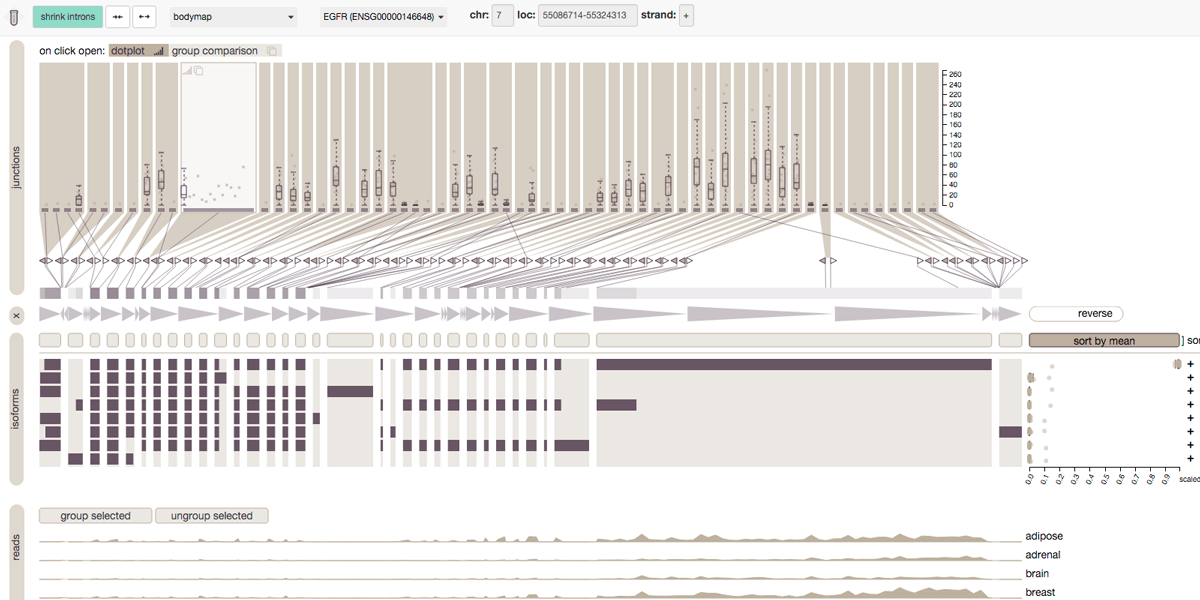
Abstract
Alternative splicing is a process by which the same DNA sequence is used to assemble different proteins, called protein isoforms. Alternative splicing works by selectively omitting some of the coding regions (exons) typically associated with a gene. Detection of alternative splicing is difficult and uses a combination of advanced data acquisition methods and statistical inference. Knowledge about the abundance of isoforms is important for understanding both normal processes and diseases and to eventually improve treatment through targeted therapies. The data, however, is complex and current visualizations for isoforms are neither perceptually efficient nor scalable. To remedy this, we developed Vials, a novel visual analysis tool that enables analysts to explore the various datasets that scientists use to make judgments about isoforms: the abundance of reads associated with the coding regions of the gene, evidence for junctions, i.e., edges connecting the coding regions, and predictions of isoform frequencies. Vials is scalable as it allows for the simultaneous analysis of many samples in multiple groups. Our tool thus enables experts to (a) identify patterns of isoform abundance in groups of samples and (b) evaluate the quality of the data. We demonstrate the value of our tool in case studies using publicly available datasets.
Citation
Hendrik Strobelt,
Bilal Alsallakh,
Joseph Botors,
Brant Peterson,
Mark Borowsky,
Hanspeter Pfister,
Alexander Lex
Vials: Visualizing Alternative Splicing of Genes
IEEE Transactions on Visualization and Computer Graphics (InfoVis ’15), 22(1): 399--408, doi:10.1109/TVCG.2015.2467911, 2016.
BibTeX
@article{2015_infovis_vials,
title = {Vials: Visualizing Alternative Splicing of Genes},
author = {Hendrik Strobelt and Bilal Alsallakh and Joseph Botors and Brant Peterson and Mark Borowsky and Hanspeter Pfister and Alexander Lex},
journal = {IEEE Transactions on Visualization and Computer Graphics (InfoVis ’15)},
doi = {10.1109/TVCG.2015.2467911},
volume = {22},
number = {1},
pages = {399--408},
year = {2016}
}
Acknowledgements
We thank Samuel Gratzl for help with the framework, Nils Gehlenborg for comments on the manuscript, and Sebastian Hörsch and other members of the SDA team for their expertise and feedback. This work was supported in part by Novartis Institutes for BioMedical Research, the Austrian Science Fund (J 3437-N15), the Air Force Research Laboratory and DARPA grant FA8750-12-C-0300, and the US National Institutes of Health (U01 CA198935).